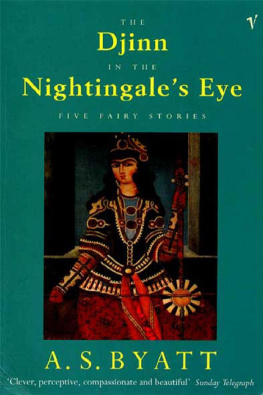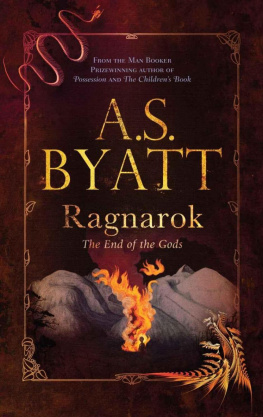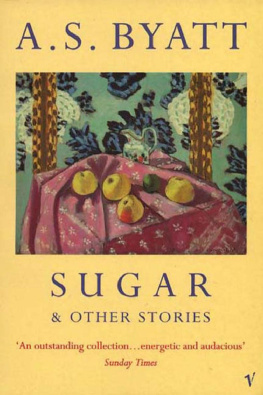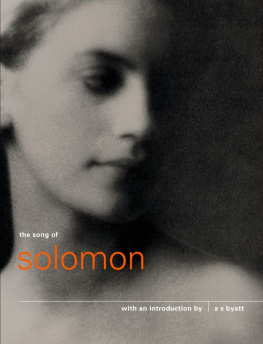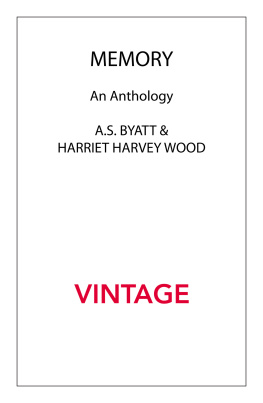A.S. Byatt - The Childrens Book
Here you can read online A.S. Byatt - The Childrens Book full text of the book (entire story) in english for free. Download pdf and epub, get meaning, cover and reviews about this ebook. year: 2010, publisher: Random House Publishing Group, genre: Art. Description of the work, (preface) as well as reviews are available. Best literature library LitArk.com created for fans of good reading and offers a wide selection of genres:
Romance novel
Science fiction
Adventure
Detective
Science
History
Home and family
Prose
Art
Politics
Computer
Non-fiction
Religion
Business
Children
Humor
Choose a favorite category and find really read worthwhile books. Enjoy immersion in the world of imagination, feel the emotions of the characters or learn something new for yourself, make an fascinating discovery.

The Childrens Book: summary, description and annotation
We offer to read an annotation, description, summary or preface (depends on what the author of the book "The Childrens Book" wrote himself). If you haven't found the necessary information about the book — write in the comments, we will try to find it.
The Childrens Book — read online for free the complete book (whole text) full work
Below is the text of the book, divided by pages. System saving the place of the last page read, allows you to conveniently read the book "The Childrens Book" online for free, without having to search again every time where you left off. Put a bookmark, and you can go to the page where you finished reading at any time.
Font size:
Interval:
Bookmark:
THE CHILDREN'S BOOK
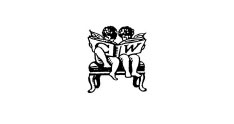
BY THE SAME AUTHOR
FICTION
The Shadow of the Sun
The Game
The Virgin in the Garden
Still Life
Sugar and Other Stories
Possession: A Romance
Angels and Insects
The Matisse Stories
The Djinn in the Nightingale's Eye
Babel Tower
Elementals
The Biographer's Tale
A Whistling Woman
Little Black Book of Stories
CRITICISM
Degrees of Freedom: The Novels of Iris Murdoch
Unruly Times: Wordsworth and Coleridge in their Time
Passions of the Mind: Selected Writings
Imagining Characters (with Igns Sodr)
On Histories and Stories: Selected Essays
Portraits in Fiction
Memory: An Anthology (ed. with Harriet Harvey Wood)
This eBook is copyright material and must not be copied, reproduced, transferred, distributed, leased, licensed or publicly performed or used in any way except as specifically permitted in writing by the publishers, as allowed under the terms and conditions under which it was purchased or as strictly permitted by applicable copyright law. Any unauthorised distribution or use of this text may be a direct infringement of the author's and publisher's rights and those responsible may be liable in law accordingly.
ISBN 9781409077237
Version 1.0
www.randomhouse.co.uk
Published by Chatto & Windus 2009
2 4 6 8 10 9 7 5 3 1
Copyright A. S. Byatt 2009
A. S. Byatt has asserted her right under the Copyright, Designs and Patents Act 1988 to be identified as the author of this work
This electronic book is sold subject to the condition that it shall not by way of trade or otherwise, be lent, resold, hired out, or otherwise circulated without the publisher's prior consent in any form other than that in which it is published and without a similar condition including this condition being imposed on the subsequent purchaser
First published in Great Britain in 2009 by
Chatto & Windus
Random House, 20 Vauxhall Bridge Road,
London SW1V 2SA
www.rbooks.co.uk
Addresses for companies within The Random House Group Limited can be found at: www.randomhouse.co.uk/offices.htm
The Random House Group Limited Reg. No. 954009
A CIP catalogue record for this book
is available from the British Library
ISBN: 9781409077237
Version 1.0
For Jenny Uglow
Beginnings

Two boys stood in the Prince Consort Gallery, and looked down on a third. It was June 19th, 1895. The Prince had died in 1861, and had seen only the beginnings of his ambitious project for a gathering of museums in which the British craftsmen could study the best examples of design. His portrait, modest and medalled, was done in mosaic in the tympanum of a decorative arch at one end of the narrow gallery which ran above the space of the South Court. The South Court was decorated with further mosaics, portraits of painters, sculptors, potters, the 'Kensington Valhalla'. The third boy was squatting beside one of a series of imposing glass cases, displaying gold and silver treasures. Tom, the younger of the two looking down, thought of Snow White in her glass coffin. He thought also, looking up at Albert, that the vessels and spoons and caskets, gleaming in the liquid light under the glass, were like a resurrected kingly burial hoard. (Which, indeed, some of them were.) They could not see the other boy clearly, because he was on the far side of a case. He appeared to be sketching its contents.
Julian Cain was at home in the South Kensington Museum. His father, Major Prosper Cain, was Special Keeper of Precious Metals. Julian was just fifteen, and a boarder at Marlowe School, but was home recovering from a nasty bout of jaundice. He was neither tall nor short, slightly built, with a sharp face and a sallow complexion, even without the jaundice. He wore his straight black hair parted in the centre, and was dressed in a school suit. Tom Wellwood, boyish in Norfolk jacket and breeches, was about two years younger, and looked younger than he was, with large dark eyes, a soft mouth, and a smooth head of dark gold hair. The two had not met before. Tom's mother was visiting Julian's father, to ask for help with her research. She was a successful authoress of magical tales. Julian had been deputed to show Tom the treasures. He appeared to be more interested in showing him the squatting boy.
'I said I'd show you a mystery.'
'I thought you meant one of the treasures.'
'No, I meant him. There's something shifty about him. I've been keeping an eye on him. He's up to something.'
Tom was not sure whether this was the sort of make-believe his own family practised, tracking complete strangers and inventing stories about them. He wasn't sure if Julian was, so to speak, playing at being responsible.
'What does he do?'
'He does the Indian rope-trick. He disappears. Now you see him, now you don't. He's here every day. All by himself. But you can't see where or when he goes.'
They sidled along the wrought-iron gallery, which was hung with thick red velvet curtains. The third boy stayed where he was, drawing intently. Then he moved his position, to see from another angle. He was hay-haired, shaggy and filthy. He had cut-down workmen's trousers, with braces, over a flannel shirt the colour of smoke, stained with soot. Julian said
'We could go down and stalk him. There are all sorts of odd things about him. He looks very rough. He never seems to go anywhere but here. I've waited at the exit to see him leave, and follow him, and he doesn't seem to leave. He seems to be a permanent fixture.'
The boy looked up, briefly, his grimy face creased in a frown. Tom said
'He concentrates.'
'He never talks to anyone that I can see. Now and then the art students look at his drawings. But he doesn't chat to them. He just creeps about the place. It's sinister.'
'Do you get many robberies?'
'My father always says the keepers are criminally casual with the keys to the cases. And there are heaps and heaps of stuff lying around waiting to be catalogued, or sent to Bethnal Green. It would be terribly easy to sneak off with things. I don't even know if anyone would notice if you did, not with some of the things, though they'd notice quickly enough if anyone made an attempt on the Candlestick.'
'Candlestick?'
'The Gloucester Candlestick. What he seems to be drawing, a lot of the time. The lump of gold, in the centre of that case. It's ancient and unique. I'll show it to you. We could go down, and go up to it, and disturb him.'
Tom was dubious about this. There was something tense about the third boy, a tough prepared energy he didn't even realise he'd noticed. However, he agreed. He usually agreed to things. They moved, sleuth-like, from ambush to ambush behind the swags of velvet. They went under Prince Albert, out onto the turning stone stairs, down to the South Court. When they reached the Candlestick, the dirty boy was not there.
'He wasn't on the stairs,' said Julian, obsessed.
Tom stopped to stare at the candlestick. It was dully gold. It seemed heavy. It stood on three feet, each of which was a long-eared dragon, grasping a bone with grim claws, gnawing with sharp teeth. The rim of the spiked cup that held the candle was also supported by open-jawed dragons with wings and snaking tails. The whole of its thick stem was wrought of fantastic foliage, amongst which men and monsters, centaurs and monkeys, writhed, grinned, grimaced, grasped and stabbed at each other. A helmeted, gnome-like being, with huge eyes, grappled the sinuous tail of a reptile. There were other human or kobold figures, one in particular with long draggling hair and a mournful gaze. Tom thought immediately that his mother would need to see it. He tried, and failed, to memorise the shapes. Julian explained. It had an interesting history, he said. No one knew exactly what it was made of. It was some kind of gilt alloy. It was probable that it had been made in Canterbury modelled in wax and cast but apart from the symbols of the evangelists on the knop, it appeared not to be made for a religious use. It had turned up in the cathedral in Le Mans, from where it had disappeared at the French Revolution. A French antiquary had sold it to the Russian Prince Soltikoff. The South Kensington Museum had acquired it from his collection in 1861. There was nothing, anywhere, like it.
Font size:
Interval:
Bookmark:
Similar books «The Childrens Book»
Look at similar books to The Childrens Book. We have selected literature similar in name and meaning in the hope of providing readers with more options to find new, interesting, not yet read works.
Discussion, reviews of the book The Childrens Book and just readers' own opinions. Leave your comments, write what you think about the work, its meaning or the main characters. Specify what exactly you liked and what you didn't like, and why you think so.

